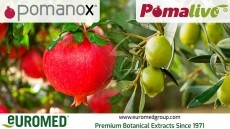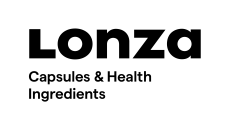Lignan focus
More lignan launches in US than Europe
is streets ahead of Europe's, indicates data from Mintel,
suggesting that there is scope for more educational efforts aimed
at formulators and consumers on this side of the Atlantic.
A growing body of research has pointed to the multifarious benefits of plant lignan intake and serum enterolactone and/or enterodiol levles on human health, most notably on hormone balance, reducing the risk of breast and prostate cancer, and hair loss.
But data drawn from Mintel's Global New Products Database suggests that there is a gulf between US and European manufacturers' use of lignans in their formulations.
Mintel's database contains 35 entries (some consisting of multiple stock keeping units) since 1998, 29 of which were in the United States and two in Canada. The only listed European entries are three in the UK and one in each of Finland and Sweden. Three entries are for launches in the UK.
This may indicate that US supplement formulators are more aware of the benefits of lignans than their European counterparts, or that there is greater awareness of their benefits amongst consumers on that side of the Atlantic.
Certainly there has been a concerted effort to raise awareness of lignans in the US market in the past 12 months.
Early last year Acatris launched its online Flax Ligan Information Bureau (http://www.flaxlignaninfobureau.com) aimed at consumers - and subsequently attributed a surge in sales of its ingredient to increased consumer awareness.
Then, in November Acatris and ADM, the respective makers of LinumLife Extra and BeneFlax, formed the Flax Lignan Association. The aim was to support the science behind standardised flax lignan products and help protect the industry as a whole from products making exaggerated claims of their flax lignan content or the associated health benefits.
Indeed, flax lignans dominate the ingredients lists of the entries in Mintel's database; the vast majority of lignans in the supplements were either SDG (secoisolariciresinol diglucoside) extracted from flaxseeds or from flax oil used in the formulation; sesame and linseed put in two appearances each as lignan sources.
The preponderance of flax on the market is no surprise since newcomer Linnea only launched its spruce pine bark derived HMRLignan to the industry at SupplySide West last autumn. The company is progressing with a research programme that aims to establish the health benefits of HMR (7-hydroxymatairesinol) independently of that conducted using SDG.
Since the beginning of this year, Mintel lists only one new entry: Gennium Pharma's Real Fiber orange flavoured chew, in Canada. Ten new lignan-containing product entries listed in 2005, 11 in 2004, five in 2003 and four in 2002.
Despite the encouraging science, there are no approved health claims for lignans that would allow supplement makers to make specific associations between their products and any disease.
But of the product descriptions in the database, six mention fibre, four mention heart health, two mentioned bone health, five mentioned hormone balance, breast or prostate health and one is intended to support "health an beauty for women of all ages".
In the majority of entries in the database, the lignans sit alongside a host of other ingredients in a multi-nutrient formulation.
Datasource : Mintel's Global New Products Database.












